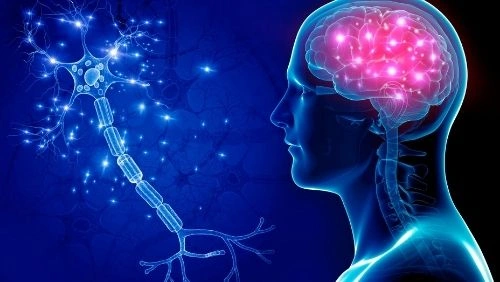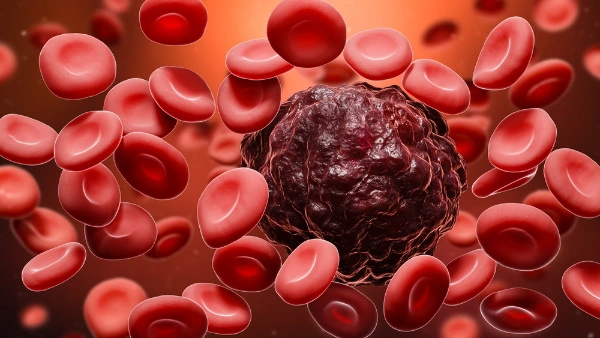Epilepsy genes

If you tested your DNA with a personal genomics service like 23andMe, AncestryDNA, FamilyTreeDNA, MyHeritage or another testing company, you can learn more about your risk factors for hundreds of diseases. By clicking the button above ⬆️, you can upload your raw DNA data file and receive a personalized 250-page health report with research links that is the most comprehensive.
If seizures are caused by a known or presumed genetic defect or issue related to epilepsy, it is believed that epilepsy has a genetic origin. It is possible for genetic epilepsy to not be hereditary. In some cases, a child may develop certain genetic pathogenic variants (or gene alterations) without inheriting them from either parent. Additionally, certain epilepsies with a genetic basis may also have other environmental factors contributing to their development.
After scouring multiple databases (OMIM, HGMD, and EpilepsyGene) and recent publications on PubMed, we identified 977 genes linked to epilepsy. These genes were sorted into four categories based on the manifestation of epilepsy in phenotypes. Among them, 84 genes were classified as epilepsy genes, causing epilepsies or syndromes with epilepsy as the primary symptom. Additionally, 73 genes were categorized as neurodevelopment-associated genes, linked to both brain-development malformations and epilepsy. Another 536 genes were considered epilepsy-related, associated with physical or systemic abnormalities and epilepsy or seizures. Finally, we discovered 284 genes that may be associated with epilepsy, but further verification is necessary.
Genes associated with epilepsy and neurodevelopment:
Holoprosencephaly PTCH1a
Band-like calcification with simplified gyration and polymicrogyria OCLN
Bilateral frontoparietal polymicrogyria GPR56
Bilateral perisylvian polymicrogyria GPR56
Bilateral temporooccipital polymicrogyria FIG4a
CK syndrome NSDHL
Megalencephaly-polymicrogyria-polydactyly-hydrocephalus syndrome PIK3R2a
Polymicrogyria with optic nerve hypoplasia TUBA8
Rolandic epilepsy, speech dyspraxia, and mental retardation SRPX2
Symmetric or asymmetric polymicrogyria TUBB2Ba
Periventricular heterotopia FLNA
Periventricular heterotopia with microcephaly ARFGEF2
Periventricular nodular heterotopia ERMARDa
Subcortical laminar heterotopia DCX, PAFAH1B1a
Tuberous sclerosis TSC1, TSC2
Complex cortical dysplasia with other brain malformations KIF2A, KIF5C, TUBB2A, TUBB3a, TUBG1a
Cortical dysplasia-focal epilepsy syndrome CNTNAP2
Occipital cortical malformations LAMC3
Pontocerebellar hypoplasia AMPD2, CLP1, EXOSC3a, PCLOa, SEPSECS, TSEN2a, TSEN54, VPS53, TSEN15
Mental retardation, X-linked, with cerebellar hypoplasia and distinctive facial appearance OPHN1a
Dentatorubro-pallidoluysian atrophy ATN1
Idiopathic basal ganglia calcification SLC20A2a, XPR1a
White matter and others
Agenesis of the corpus callosum with peripheral neuropathy SLC12A6
Leukodystrophy and acquired microcephaly with or without dystonia PLEKHG2a
Nonsyndromic hydrocephalus CCDC88C, MPDZa
Porencephaly COL4A2a
Schizencephaly EMX2
General brain malformation
Lissencephaly TUBA1A, LAMB1, RELN, ARX, DCX, PAFAH1B1a
Lissencephaly with cerebellar hypoplasia CDK5a
Lissencephaly with microcephaly KATNB1, NDE1
Epilepsy, hearing loss, and mental retardation syndrome SPATA5
Galloway-Mowat syndrome WDR73a
Mental retardation and microcephaly with pontine and cerebellar hypoplasia CASK
Microcephaly-capillary malformation syndrome STAMBP
Microcephaly, epilepsy, and diabetes syndrome IER3IP1
Microcephaly, seizures, and developmental delay PNKP
Microcephaly, short stature, and impaired glucose metabolism PPP1R15Ba, TRMT10A
Microcephaly, short stature, and polymicrogyria with seizures RTTN
Microcephaly with or without chorioretino-pathy, lymphedema, or mental retardation KIF11
Postnatal progressive microcephaly, seizures, and brain atrophy MED17
Primary microcephaly ANKLE2a, ASPM, CENPEa, CENPJa, MFSD2A, SASS6a
Primary microcephaly with or without cortical malformations WDR62a
Progressive microcephaly with seizures and cerebral and cerebellar atrophy QARS
Seizures, cortical blindness, microcephaly syndrome DIAPH1
Macrocephaly, dysmorphic facies, and psychomotor retardation HERC1a
Polyhydramnios, megalencephaly, and symptomatic epilepsy STRADA
X-linked epilepsy with variable learning disabilities and behavior disorders SYN1
Psychomotor retardation, epilepsy, and craniofacial dysmorphism SNIP1
Epilepsy-related genes:
Cavernous malform-ations CCM1, KRIT1
Long QT syndrome CALM2, KCNQ1, KCNJ5, CAV3
Moyamoya disease GUCY1A3, RNF213
Others (cerebral amyl-oid angiopathy, etc.) COL4A1, PRNP, PROS1, CTC1, F2, JAM3
Alzheimer disease APP, PSEN1, PSEN2
Angelman syndrome UBE3A (IC)
Autism CHD8, TMLHE, RPL10, SLC9A9
Fragile X syndrome FMR1
Frontotemporal dementia MAPT
Mental retardation ARID1A, ARID1B, ASXL1, AUTS2, BRAF, DEAF1, DYNC1H1, GNB1, HIVEP2, KAT6A, KIAA0442, KIF1A, MBD5, MED13L, MYT1L, NONO, PPP2R1A, PPP2R5D, PURA, SETBP1, SMARCA2, SMARCA4, SMARCB1, SMARCE1, SYNGAP1, TCF4, ZEB2, ANK3, ERCC6, FMN2, FTO, GRIK2, HERC2, KPTN, LMAN2L, MAN1B1, MED25, METTL23, NRXN1, PGAP1, PIGG, PUS3, SOBP, TRAPPC9, IQSEC2, SLC9A6, SYP, USP9X, ZDHHC15, AP1S2, ATP6AP2, CLIC2, CUL4B, DLG3, FGD1, GRIA3, HCFC1, IL1RAPL1, KDM5C, KIF4A, MECP2, MID2, PAK3, PHF6, RAB39B, SMS, TAF1, THOC2, UBE2A, CACNG2, COL4A3BP, DYRK1A, FTSJ1, GATAD2B, GDI1, GPT2, GRIN1, MEF2C (IC), SHROOM4
Others (McLeod syndrome, progressive encephalopathy, etc.) RAI1 (IC), SERPINI1, BSCL2, XK, MTOR
Congenital disorder of glycosylation ALG1, ALG11, ALG2, ALG3, ALG6, CAD, COG4, COG6, DOLK, DPAGT1, DPM1, DPM2, MOGS, MPDU1, NGLY1, RFT1, SLC39A8, STT3A, STT3B, SLC35A2, SSR4, ALG12, ALG9, COG7, COG8
Joubert syndrome AHI1, CC2D2A, CSPP1, OFD1
Microphthalmia BMP4, OTX2, RBP4, SOX2, NAA10
Multiple congenital anomalies-hypotonia-seizures syndrome PIGN, PIGT, PIGA
Muscular dystrophy CHKB, LAMA2, TRAPPC11
Muscular dystrophy-dystroglycanopathy B3GNT1, B4GAT1, FKTN, GMPPB, POMGNT1, POMK, POMT1, POMT2
Neurofibromatosis NF1
Neuropathy DNMT1, SPTLC2, ABHD12
Rett syndrome FOXG1 (IC)
Spinal muscular atrophy with progressive myo-clonic epilepsy ASAH1
Sturge–Weber syndrome GNAQ
Zellweger syndrome PEX2, PEX13, PEX14, PEX19, PEX3
Others (craniosynost-osis, thanatophoric dysplasia, etc.) ACTB, ACTG1, ACVR1, ADNP, DNMT3A, EFTUD2, EHMT1 (IC), FAM111A, FGFR2, FGFR3, GATA6, HNF1B, KCNH1, KCNJ6, KMT2A, MAF, MAGEL2, MAPRE2, MARCA2, MSX2, NOTCH1, NSD1, POGZ, PTEN, PUF60, SATB2, SETD2, SOX5, ZSWIM6, AGPS, ALDH18A1 (IC), AP3D1, ARNT2, ATP6V0A2, BRAT1, C12orf57, C19orf61, CCDC88A, CEP164, CLPP, COL18A1, CRB2, CRLF1, DHCR24, DOCK6, EPG5, EXT2, FAT4, GNPAT, GPSM2, GPX4, LRP2, MKS1, NANS, NIN, PARN, PEX5, PIGL, RAB18, RAPSN, ROGDI, SLC33A1, SLC35A3, TELO2, XPNPEP3, AMER1, DXS423E, NDUFB11, NHS, SMC1A
Herpes simplex ence-phalitis IRF3, TICAM1, TRAF3
Immunodeficiency BCL10, CORO1A, IFNAR2, ISG15, ORAI1, PGM3, PRKDC, STAT1, STAT2, ATP6AP1
Inflammatory disorder IFIH1, NOD2, CD59, PSMB8
Others (candidiasis, neutropenia, etc.) RANBP2, CARD9, DOCK8, FADD, HAX1, CPT2
Aciduria ACADSB, AUH, C2orf25, CLPB, CTH, D2HGDH, DHTKD1, DPYS, GLYCTK, MMAA, MMADHC, MTR, SLC25A1, ACSF3, IDH2
Amino acid metabolic disturbance AASS, ALDH4A1, AMT, ARG1, GCH1, GLDC, GLUL, LIAS, PRODH, QDPR, SLC25A15
Coenzyme Q10 deficiency COQ2, COQ4, COQ6, COQ8A, COQ9, PDSS2
Combined oxidative phosphorylation deficiency CARS2, EARS2, FARS2, GFM1, GTPBP3, MRPS22, MTFMT, MTO1, NARS2, RMND1, TXN2, VARS2, AIFM1
Diabetes mellitus ABCC8, KCNJ11, ZFP57
Enzymatic deficiency ATP1A2, RYR1, ABAT, ACADS, ACOX1, ACY1, ADK, ADSL, AMACR, ASNS, ATIC, BCKDHA, CPS1, DHFR, DLD, DPYD, FAR1, HIBCH, MCCC1, MCCC2, MLYCD, MTHFR, NADK2, OPLAH, PC, PDHX, PDX1, PHGDH, PSAP, PSAT1, PSPH, SCO2, SLC25A20, UPB1, HSD17B10, PDHA1, GK, MAOA, NDP, OTC, PGK1, BCKDK, HADHA, HMGCS2, NAT8L, PEX7, POMC
Folate malabsorption SLC46A1
Folate transport deficiency FOLR1
Glycogen storage disease AGL, GYS1
Hormone metabolism dysfunction CACNA1D, GLI2, PROK2, THRB, MCM8, MRAP, HESX1, AVPR2, ANOS1, FGF8
Hyperphosphatasia with mental retardation syndrome PGAP2, PGAP3, PIGO, PIGV, PIGW, PIGY
Hypocalcemia GNA11
Hypoglycemia AKT2, GCK, INSR
Hypomagnesemia TRPM6, CNNM2, EGF
Hypoparathyroidism PTH
Leigh syndrome LRPPRC, NDUFA2, NDUFAF6, NDUFS4, NDUFS8
Lipid storage disorder NPC1, NPC2
Menkes disease ATP7A
Mitochondrial disease (progressive external ophthalmoplegia with mitochondrial DNA deletions, etc.) POLG2, ATP5A1, ATPAF2, BCS1L, BOLA3, BRP44L, C10orf2, FBXL4, MPC1, PNPLA8, POLG, RRM2B, RTN4IP1, SDHD, SUCLA2, TMEM70, UQCC2, APOPT1, COX10, COX6B1, COX8A, FASTKD2, PET100, FOXRED1, NDUFA1, NDUFAF3, NDUFV1, NUBPL
Mucopolysaccharidosis HGSNAT, IDS
Neuronal ceroid lipofuscinosis DNAJC5, CLN3, CLN5, CLN6, CLN8, CTSD, CTSF, GRN, MFSD8, PPT1, TPP1
Thiamine metabolism dysfunction syndrome SLC19A3, TPK1
Vitamin D-dependent rickets CYP27B1
Others (brain iron accumulation, Salla disease, etc.) ANKH, COL3A1, DNM1L, TTR, ARHGDIA, CYB5R3, ECM1, ETFDH, ETHE1, GAMT, GBA, HADHB, HEXA, HSD17B4, KCNJ10, LARS2, MOCS2, PIGM, PLA2G6, SLC17A5, TANGO2, FTL, SLC16A1, WDR45, SLC6A8, GPHN
Cerebellar ataxia CAMTA1, SLC9A1
Dyskinesia PDE10A
Dystonia SGCE, ACO2, CRYAB, NALCN, TBCK, UNC80, GLRA1, SPR
Episodic ataxia KCNA1, SLC1A3
Episodic hemiplegia ATP1A3
Huntington disease HTT
Parkinson disease LRRK2, DNAJC6, SYNJ1
Spastic ataxia AFG3L2, SACS
Spastic paraplegia NIPA1, AP4B1, AP4E1, AP4S1, ERLIN2, GJC2, HACE1, TECPR2, ZFYVE26, PLP1
Spastic quadriplegia ADD3, ELOVL4, GAD1, SLC1A4
Spinocerebellar ataxia ATXN10, ITPR1, TBP, ANO10, GRM1, RUBCN, SNX14, SYT14, TDP2, TDP1
Alexander disease GFAP
Krabbe disease GALC
Leukodystrophy TUBB4A, AIMP1, ARSA, HSPD1, POLR3B, VPS11
Leukoencephalopathy CSF1R, DARS2, EIF2B1, HEPACAM, MLC1, RNASET2
Glioblastoma BRCA2
A total of 73 genes have been identified as being associated with neurodevelopment, while 536 genes have been linked to epilepsy. The presence of observable neurodevelopmental abnormalities and physical or systemic irregularities can serve as crucial indicators for diagnosis and offer valuable insights for developing a cost-efficient genetic testing plan tailored to a specific patient population.
Follow the link of the selected polymorphism to read a brief description of how the selected polymorphism affects Epilepsy and see a list of existing studies.
SNP polymorphisms related to the topic Epilepsy:
| rs211037 | The GABRG2 polymorphism, rs211037 is associated with predisposition to epilepsy but not with resistance to antiepileptic drugs and febrile seizures. |
| rs2304016 | SCN2A gene polymorphism affects response to antiepileptic drugs in the treatment of epilepsy. |
| rs17679445 | Responsible for reducing the activity of the enzyme pyridoxamine-5-phosphatoxidase, leads to a significant decrease in the level of the active form of vitamin B6. |
| rs200945460 | Nav1.7 mutations cause a risk of idiopathic small fibre neuropathy. |
| rs121912707 | ALDH7A1 gene mutation can lead to pyridoxine-dependent epilepsy. |
| rs3804505 | A mutation in EFHC1 is associated with juvenile myoclonic epilepsy. |
| rs16019 | |
| rs39861 | |
| rs580041 | |
| rs684513 | |
| rs747283 | |
| rs964112 | |
| rs986527 | |
| rs2273697 | |
| rs2290732 | |
| rs3769955 | |
| rs4426541 | |
| rs6432860 | |
| rs6735544 | |
| rs7587026 | |
| rs11031434 | |
| rs11890028 | |
| rs28940576 | |
| rs121909580 | |
| rs147484110 | |
| rs148382729 | |
About The Author
Li DaliLi Dali, a National Foundation for Outstanding Youth Fund recipient, is a researcher at the School of Life Sciences in East China Normal University. He earned his PhD in genetics from Hunan Normal University in 2007 and conducted collaborative research at Texas A&M University during his doctoral studies. Li Dali and his team have optimized and innovated gene editing technology, leading to the establishment of a world-class system for constructing gene editing disease models.


